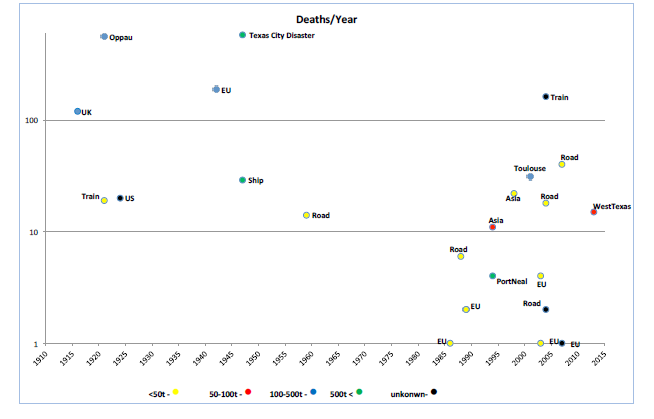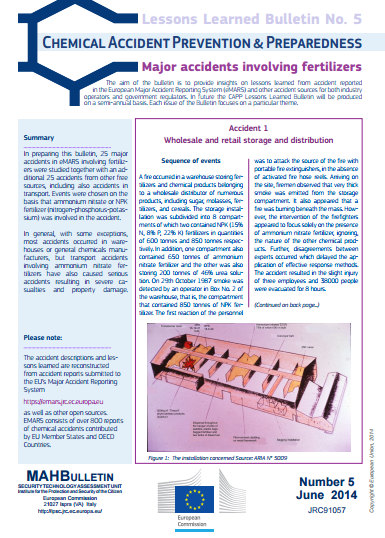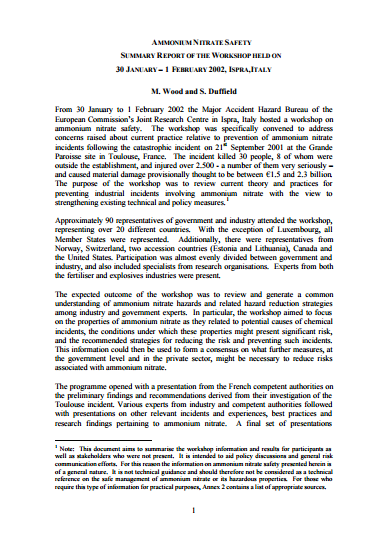Ammonium nitrate fertilizer storage and production
As a substance, ammonium nitrate has a long history. (It was first produced in 1659). It is a “dual-use” substance from which either fertilizers or explosives can be produced. It is produced at a large scale throughout the world (over 20 million tonneIs in 1998) with over a third of this production based in Europe (over 7 million tonnes in 1998). It is without doubt important for western society. It is an easily absorbed and efficient source of nitrogen for plants and particularly suitable to growth conditions of the European climate. Its efficient absorption rate means that it is relatively friendly to the environment relative to other manufactured fertilizers; the amount of nitrogen lost to the at- mosphere is normally low.
Ammonium nitrate caused a few of the most catastrophic events of the 20th century in peaceful times. The two most no- torious and disastrous accidents in the western world were the Oppau, Germany, accident from the detonation of 450 tonnes of sulfo-ammonium nitrate fertilizers in storage that killed 561 people. In 1947, in Texas City, Texas (USA) a ship carrying 2600 t of ammonium nitrate exploded and set fire to a nearby ves- sel hold 960 tonnes of ammonium nitrate. 581 people in to- tal were killed. Detailed descriptions and lessons learned from these accidents can be found from many sources. Several books have been written that cover these disasters and there is also substantial information on these and other ammonium nitrate accidents available in open sources online.
Still since then, ammonium nitrate has been involved in nu- merous accidents causing explosions, fires, and releasing toxic fumes. It has been recognized in many countries that even small storages of ammonium nitrate fertilizers, defined as low as 10 tonnes in some legislation, may place the population at high risk if proper safety measures and procedures are not fully in place. The chart below depicts the fatalities and tonnage associated with AN accidents identified by this study from 1916 until present.

Fatalities and tonnage associated with AN accidents. (Source: eMARS and http://en.wikipedia.org/wiki/Ammonium_nitrate_disasters.) If you would like a list of the accidents in this chart and
references used, please send an email with your request to emars@jrc.ec.europa.eu.
(Lessons Learned Bulletin no.5 Major accidents involving fertilizers)
|
|
 |
- Ammonium nitrate safety summary report of the workshop held on 30 January – 1 February 2002, Ispra, Italy
- This report summarises the results of the EU workshop following the disastrous explosion of ammonium nitrate in Toulouse, France on 21 September 2001 that caused 29 deaths and over 2500 injuries. It laid the groundwork for an amendment to the Seveso Directive (2003/105/EC) that aligned threshold quantities with the UN Recommendations on the Transport of Dangerous Goods (UN ADR), and adding a classification for "off-spec" (non-conforming) ammonium nitrate fertilizer product.
|
 |

